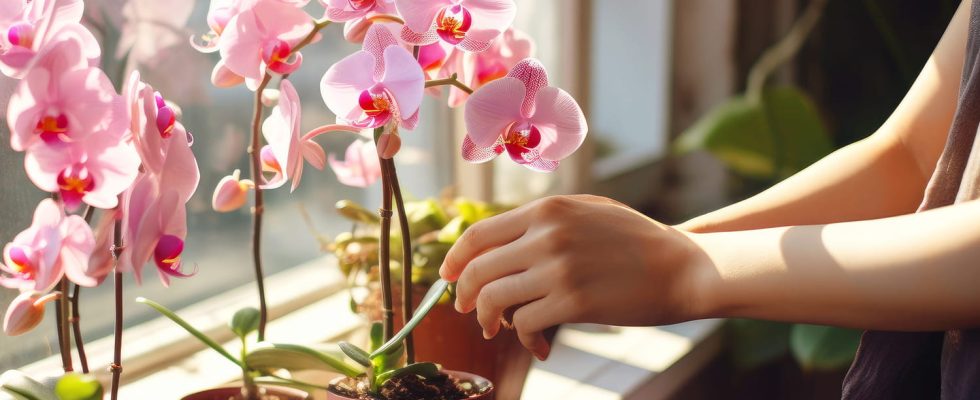If your orchid no longer has flowers, don’t throw it away. Here’s how to encourage its flowering.
The orchid is a star plant in our interiors. Often given as a gift, the orchid has everything to please, but it requires precise know-how and careful attention if you want to have pretty flowers from one year to the next. This is what discourages many of us… And yet, a single simple gesture, if done well, and especially at the right time, ensures that your orchids will have even more beautiful flowers when the next flowering.
Maintaining the orchid is not just a question of watering, fertilizer or pots, three points regularly put forward. Gardeners and florists from the Interflora store chain shared a little extra that makes all the difference: pruning your orchid. To revive it and help it get through the winter peacefully, this little facelift session is essential.
But then how to properly prune your plant, and when? To keep your orchid producing pretty flowers, it requires pruning after the flowers have fallen. If you take the right action, your plant can continue to grow and flower for many years. A sign should help you find the right moment: just watch for when the flowers fall. This is the clue to look for and the signal: it is almost the right time to prune the orchid. But the good news is that this generally happens in the fall. Leave the healthy stems for a few days or weeks and watch for the appearance of new stems. Once these appear, you can move on to pruning. We give you the instructions for use below.
You are ready ? To properly prune your orchid, all you need is pruning shears or a knife. Here are the steps to follow:
- Check the health of your plant’s stem(s). The size will depend on the condition of your stems.
- If the stems are green and firm to the touch, they are healthy. On the contrary, if they are brown/yellow in color and hard to the touch, they are not healthy.
- Sterilize your pruning shears with boiling water to avoid transmitting diseases to your plant.
- Using your pruning shears, cut off any dead leaves, tissue or roots, making sure to cut diagonally. Cutting off dead roots will help prevent rotting, which can “kill your orchid.”
- For healthy stems, and if this was their first flower, cut the stem just above the stem notch/knot where the first flower bloomed. This will allow new growth to emerge.
- If the stem is in poor health or the plant has already rebloomed once, it is best to cut an inch above the base of the stem. This allows the orchid to focus its energy on producing strong new leaves and roots.
With this simple little gesture to do this fall, you ensure the best chance of seeing your orchid take off again and produce magnificent new flowers within 8 to 12 weeks according to Interflora.
